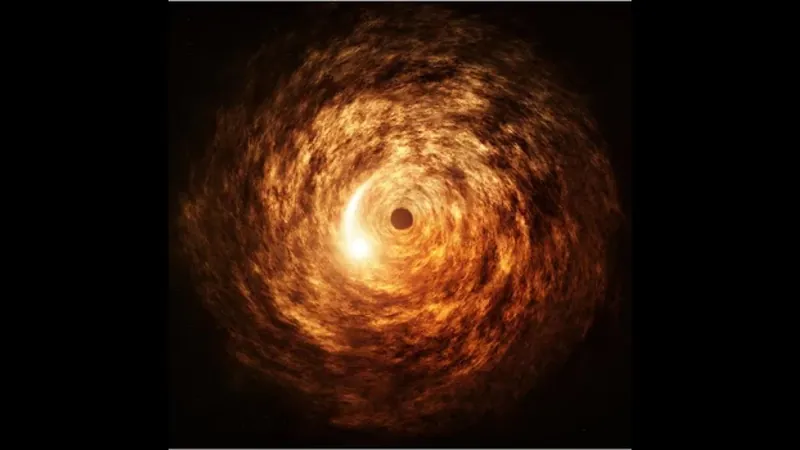
James Webb Telescope Makes Groundbreaking Discovery of Mid-Infrared Flare from the Milky Way's Supermassive Black Hole
2025-01-17
Author: Sophie
Introduction
The James Webb Space Telescope (JWST) has achieved a remarkable milestone by detecting a mid-infrared flare from Sagittarius A*, the supermassive black hole located at the center of our Milky Way galaxy. This discovery not only enhances our understanding of such cosmic phenomena but also sheds light on the underlying mechanisms that trigger these mysterious outbursts.
Sagittarius A* and Its Environment
Sagittarius A*, which boasts a mass roughly 4 million times that of our Sun, is situated about 26,000 light-years from Earth. The black hole is surrounded by a swirling disk of dust and gas, which emanates flares—high-energy bursts of light believed to result from disturbances in the magnetic fields within this chaotic environment. According to experts at the Max Planck Institute for Radio Astronomy, these flares occur when magnetic field lines connect, releasing vast amounts of energy. This energy accelerates electrons to nearly the speed of light, leading to the emission of high-energy light particles known as photons.
Advancements in Observation
Previously, astronomers had only been able to observe these flares in shorter wavelengths of visible light and longer radio wavelengths, with no substantial evidence in the mid-infrared spectrum, which we perceive as heat. Dr. Joseph Michail, co-lead author of the study from the Harvard Center for Astrophysics, stated, "For over 20 years, we've understood the behaviors in the radio and near-infrared domains, but the links between them were never fully clarified. This new mid-infrared observation fills that crucial gap."
The James Webb Space Telescope's Role
Executing its mission from nearly a million miles (1.5 million kilometers) away, the JWST has been gathering data since its launch in 2021. On April 6, 2024, it captured a significant 40-minute flare from Sagittarius A*, providing crucial insights into the nature of these eruptions. The telescope's data confirmed the predictions made by simulations, revealing that the interplay of magnetic field lines is indeed responsible for the observed flares. Researchers noticed correlations between short-wavelength and mid-infrared measurements, suggesting that rapidly moving electrons are emitting light as they traverse magnetic field lines—a process referred to as synchrotron emission.
Future Research Directions
Dr. Sebastiano von Fellenberg, another co-lead author of the study, remarked, "While our findings imply that Sgr A*'s mid-infrared emission stems from synchrotron radiation produced by cooling electrons, we still have much to learn about the magnetic reconnection events and turbulence within Sgr A*’s accretion disk. This pioneering mid-infrared detection, along with the variability observed in other measurements, not only enhances our comprehension of the origins of the flare but also paves the way for new research avenues."
Conclusion
In conclusion, the JWST's groundbreaking detection of mid-infrared flares from Sagittarius A* marks a significant step forward in astrophysics. As scientists continue to unravel the mysteries of black holes, this discovery promises to deepen our understanding of the universe and its enigmatic phenomena. Stay tuned for more updates as researchers delve further into the intricate workings of our galaxy's heart!









 Brasil (PT)
Brasil (PT)
 Canada (EN)
Canada (EN)
 Chile (ES)
Chile (ES)
 Česko (CS)
Česko (CS)
 대한민국 (KO)
대한민국 (KO)
 España (ES)
España (ES)
 France (FR)
France (FR)
 Hong Kong (EN)
Hong Kong (EN)
 Italia (IT)
Italia (IT)
 日本 (JA)
日本 (JA)
 Magyarország (HU)
Magyarország (HU)
 Norge (NO)
Norge (NO)
 Polska (PL)
Polska (PL)
 Schweiz (DE)
Schweiz (DE)
 Singapore (EN)
Singapore (EN)
 Sverige (SV)
Sverige (SV)
 Suomi (FI)
Suomi (FI)
 Türkiye (TR)
Türkiye (TR)
 الإمارات العربية المتحدة (AR)
الإمارات العربية المتحدة (AR)